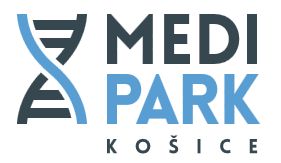I. Contributions for mobility participants with fewer opportunities
- Mobility participants with fewer opportunities are entitled to a contribution above the level of the basic grant rate in the amount determined by the SAAIC national agency for each call and for each type of mobility in the given call separately.
- The Erasmus+ program guide defines a participant with fewer opportunities as follows: “A person with fewer opportunities is a potential participant whose personal, physical, mental or health condition does not allow him to participate in a mobility project/action without additional financial or other support.”
- The program guide presents the following list of possible barriers to mobility:
➢ Disability: This includes a physical, mental, intellectual or sensory impairment which, interacting with various barriers, may prevent some people from participating fully and effectively in the life of society on the same terms as other people.
➢ Health problems: Barriers can result from health problems such as serious illnesses, chronic diseases or any other physical or mental conditions preventing participation in the program.
➢ Barriers related to education and training systems: Barriers may be faced by individuals who, for various reasons, find it difficult to achieve satisfactory results in education and in the training systems, people who have left school early, people who are not employed and are not in the process of education or training, and adults with low skill levels. Although other factors may play a role, these difficulties in education, which may also be related to their personal situation, mostly result from an education system that creates structural limitations and/or does not fully take into account the special needs of the individual. Individuals may also face barriers to participation when the structure of curricula makes a study mobility or a training mobility difficult.
➢ Cultural differences: Although cultural differences can be perceived as obstacles by people of any background, these differences can particularly affect people with fewer opportunities. Such differences can represent significant barriers to education in general, but even more so for migrants or refugees (especially newly arrived migrants), people belonging to a national or ethnic minority, users of sign language, people with language difficulties adaptation and cultural inclusion, etc. Exposure to foreign languages and cultural differences while participating in any program activities may discourage individuals and to some extent limit the benefits of their participation. Such cultural differences may even discourage potential participants from applying for support under the program altogether, thus representing a barrier to participate.
➢ Social obstacles: Difficulties with social adaptation, such as limited social competences, antisocial or high-risk behaviour, (former) offenders, (former) drug or alcohol users or social marginalization can be obstacles. Other social obstacles may result from family circumstances, e.g. if somebody is a parent (especially a single parent), caregiver, breadwinner or orphan, or if the person has been or is currently in institutional care.
➢ Economic obstacles: An obstacle can be an economic disadvantage, which can be a low standard of living, low income, studying while working, dependence on the social security system in case of long-term unemployment, problematic situations or poverty, homelessness, debt or financial problems, etc.
➢ Discrimination-related barriers: There may be barriers that are the result of discrimination related to gender, age, ethnic origin, religious or philosophical belief, sexual orientation, disability or intersectional factors (in combination with two or more of the other discrimination-related barriers listed).
➢ Geographical barriers: Living in remote or rural regions, small islands or peripheral/outermost regions, suburbs, areas with limited services (limited public transport, insufficient facilities) or less developed areas in third countries, etc. can be an obstacle.
- Financial support for a participant with fewer opportunities consists of an additional flat-rate amount of individual support (so-called “top-up“), while in justified cases, if the grant will not be sufficient, it is possible to request the national agency for additional support based on real costs (special grant).
- The rule for allocating an additional amount (so-called “top-up”) of individual support for participants with fewer opportunities: based on the participant’s request, while the participant is obliged to deliver all mandatory documents to the mobility coordinator at the UPJŠ International Relations Office in sufficient time before the mobility. The types of the required documents for the individual categories of disadvantages are listed in Table no. 1.
- The special grant is provided in the form of real costs. It is intended to cover additional costs incurred by participants with fewer mobility opportunities in cases where the top-up (flat rate) would not be able to cover these costs. These costs are specifically intended to cover the extra financial support required for participants with physical, mental or medical disabilities to enable them to participate in mobility. Financing mechanism: real costs documented by accounting documents.
- Special grant allocation rule: the university will be able to apply to the national agency for special grants for its students/employees by the deadline specified in the special call. The application of the university must contain the requests of individual mobility participants of the given university. Participants will be informed about the possibility to apply for a special grant in sufficient time. They can apply for a grant using the application sent to them by the faculty/institute/departmental coordinators as soon as the national agency publishes its call.
- Examples of real costs:
➢ allowance for transport (e.g. rental of a special motor vehicle, if the person in question is dependent on individual transport by personal motor vehicle, or such transport is provided by an authorized person/municipality/social service provider) to/from, as well as at the location (e.g. if the person in question is unable to use public transport, whether due to physical or psychological limitations);
➢ allowance in case the mobility participant needs assistance or care (e.g. compensation for a person who provides personal assistance on the basis of a written contract or for a family member in case of care);
➢ allowance for travel and accommodation for the accompanying person;
➢ material support for participants – special didactic aids, special medical supplies, etc.
- Types of support for groups with fewer opportunities – Erasmus + (2021 – 2027) (Table 1):
Description
A person with a severe health disability (hereinafter referred to as a person with a SHD) is considered a person with a functional impairment rate of at least 50%.
Type of support
Top-up and real costs (if top-up is not enough)
Mandatory documents to the contirbutions
- preukaz ŤZP – Disability Card
- Application for the participants with special needs (available only in Slovak)
- Consent to the Processing of a Special Category of Personal Data
- Acceptance letter from the receiving university/institution
Description
A person with a health problem is considered a person with a chronic illness or psychiatric illness.
Type of support
Top-up
Mandatory documents to the contirbutions
- Medical report and/or financial contribution decision from ÚPSVaR (labor office) and/or a student with special needs status – Counseling Center report not olden than 1 year
- Consent to the Processing of a Special Category of Personal Data*
Description
- low standard of living, low income (eg. family in social need)
- dependence on the social security system (eg. orphan’s pensioner, unemployment benefits)
Type of support
Top-up
Mandatory documents to the contirbutions
Social scholarship and/or – confirmation of material need from the ÚPSVaR (labor office) not older than 1 year
Description
Social adaptation difficulties:
- a single parent with a child (i.e. a single woman or a single man who is permanently taking care for a child under the age of 15),
- discrimination barriers
Type of support
Top-up
Mandatory documents to the contirbutions
Depending on the situation: Statutory declaration**
Description
Different types of barriers (e.g. ethnic origin, migrants, etc.) – depending on the university’s decision
Type of support
Top-up
Mandatory documents to the contirbutions
Depending on the situation: Statutory declaration**
*If the documents listed above are not informative enough, the participant is obliged to explain (BY LETTER/EMAIL) in detail, EXPLICITLY, DESCRIPTIVELY to the university how the additional financial contribution will help the implementation of mobility (for WHAT SPECIFIC EXPENSES the contribution will be used for), WHY ARE THESE EXPENSES JUSTIFIED.
**+ written justification of the increased costs that the additional grant would help to cover
- In the case of participants where the sending institution is not a Slovak university (incoming participants within KA171) and who cannot prove themselves in a similar way, the national agency accepts the confirmation of the sending institution that the given participant belongs to a group with fewer opportunities.
II. Contribution for green travel
- Mobility participants have the opportunity to ask the university for a one-time contribution for green travel in the amount of 50 EUR in addition to the regular grant, if the participant uses: train, bus, carpooling (shared car), bicycle or their combination.
- The condition for awarding the grant is that the participant makes most of his/her journey in ONE DIRECTION to and/or from his/her mobility in a green way.
- In order to grant a contribution, it is necessary to proceed in the following way:
- a) The mobility participant will hand over to the mobility coordinator at the International Relations Office of UPJŠ a Declaration of Honour before or after mobility, in which s/he specifies the means of transport used for the journey to the place of mobility and home.
- The mobility participant is obliged to attach a travel ticket as proof of the green method of travel and a confirmation of payment to the Declaration of Honour. The date of departure and arrival must follow the mobility period. CARPOOLING IS ONLY POSSIBLE IF THE APPLICANT TRAVELS TO THE MOBILITY IN THE SAME CAR, AT THE SAME TIME, TO THE SAME PLACE TOGETHER WITH AT LEAST ONE OTHER MOBILITY PARTICIPANT WHO IS ALSO A UPJŠ STUDENT.
- On the basis of the submitted documents, the university will allocate the participant a contribution for green travel, which will be added to the total amount of the mobility grant. If necessary, s/he will adjust the amount of the allocated grant in the financial agreement, and then ensure its transfer to the participant’s bank account.
III. Allowance for travel days in case of green travel
- Participants of a short-term mobility can be assigned max. two days of individual support for travel days. If students and recent graduates use sustainable means of travel for a long-term mobility, they can be allocated additional days (max. 4 days) of individual support for travel days as well.
In the event that the total travel time, including transfers, exceeds 24 hours, the participant can claim additional individual support to 1/30 of the monthly rate of the given country as follows:
1 day: 24 to 48 hours on the road
2 days: 48h to 72h
3 days: 72h to 96h
4 days: more than 96 hours on the road
An increase in the grant is possible on the basis of travel tickets (in the case of travel by train or bus), or on the basis of a vignette and confirmations of payments at petrol stations.













